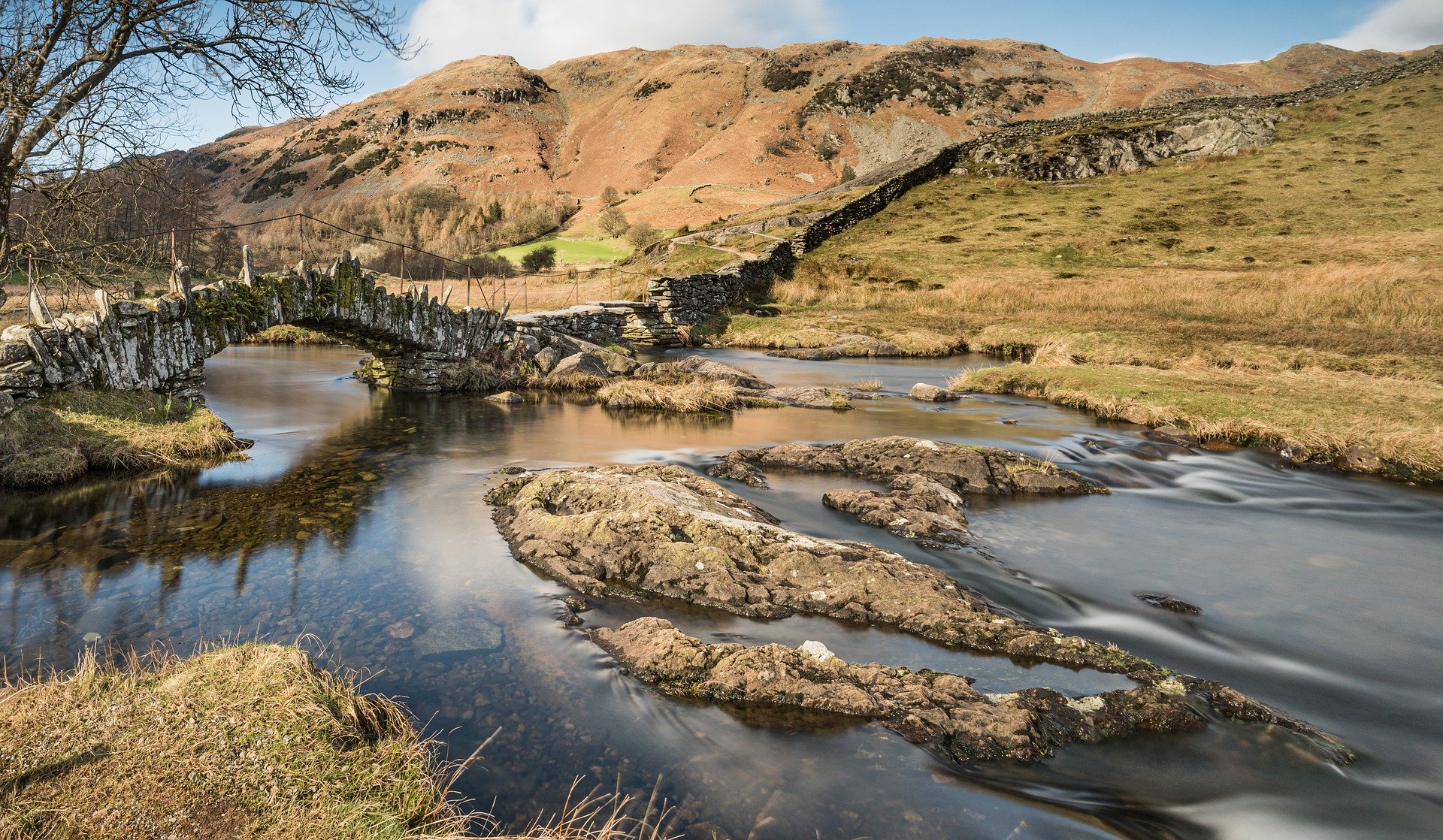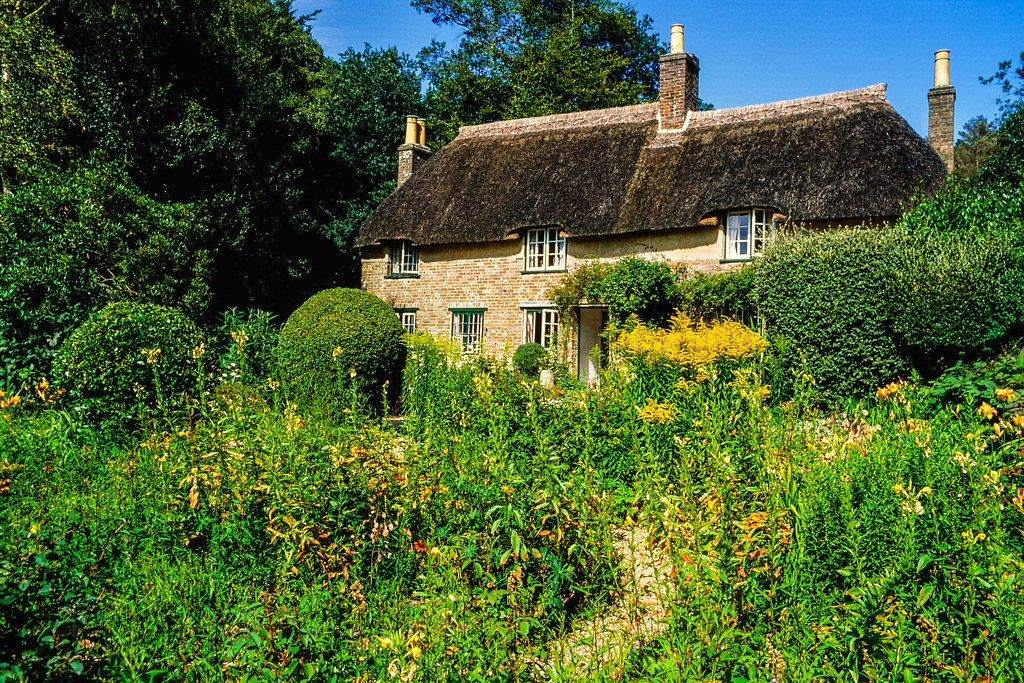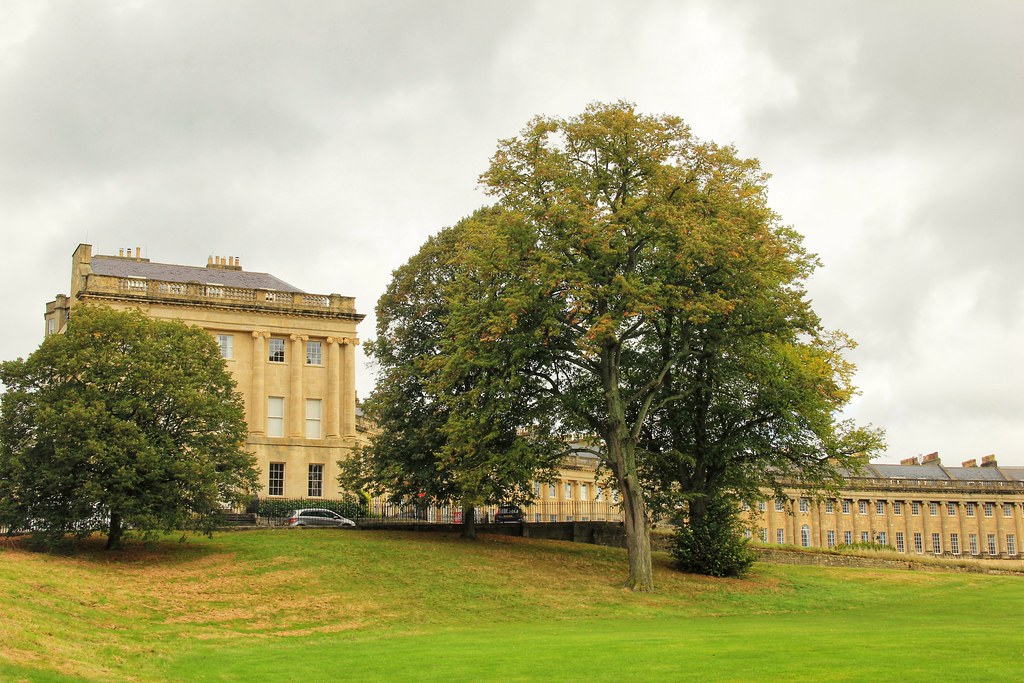If you love books and travel, this literary tour of England could be the perfect trip for you! Read on to learn about a few of the towns, cities and regions in England that have inspired some of our greatest writers in history.
Some of the links in this post are affiliate links. All this means is that if you make a purchase through one of the links I have provided, I will earn a small commission as a result but the cost to you will remain exactly the same.
This is a collaborative post.
Although I love exploring the great outdoors, there’s also nothing that gives me greater pleasure than getting lost in a good book. I spent a large chunk of my early teenage years curled up in my bedroom either listening to music or reading books, and I went on to study English Literature at university because it meant that I could spend three years indulging one of my greatest passions.
And what better way to combine my love of exploring new places with my love of books than embarking on a road trip in order to discover some of England’s best literary locations?
After all, travelling by car is a much safer alternative at the moment to taking the bus or train.
You can rent a car from UK firm Enjoy Travel to explore all of the following locations.
Recommended stops on a literary tour of England
The order that you make these stops in really depends upon where you’re starting out. If you’re London-based, it would make sense to start in Oxford or Bockhampton and if you’re Midlands-based, it would be a better option to head up to the Lake District first and finish up in Stratford-upon-Avon.
To do the destinations justice, you really need a minimum of two nights in each place (accounting for travel time on one of these days), so I would anticipate that this literary tour of England would take you 12 nights. If you don’t have that much time, you can easily skip any one of the towns, cities and regions I’ve incorporated. Alternatively, you may decide you only need one night somewhere instead of two, particularly with the shorter journeys where you have the option of arriving at your destination much earlier in the day.
Please note that, due to COVID-19, some of the tourist attractions mentioned in this post may currently be closed. Please check before visiting.
Lake District, Cumbria
As well as being famous for its immense lakes and rugged mountains, the Lake District is also very well known for its historic literary associations.
William Wordsworth lived in the region for 60 years (he died of pleurisy when he reached the ripe old age of 80 in 1850) and his appreciation for the beauty of nature – expressed so clearly in his works – was inspired by the landscapes through which he roamed. His most famous poem, I Wandered Lonely a a Cloud, forms part of the English Literature syllabus in classes throughout the UK (I remember reading it myself somewhere in my early-mid teens) , and was famously inspired by the sight of daffodils on the shores of Ullswater Lake.
In 1820 Wordsworth wrote a Guide Through the District of the Lakes in the North of England, and it was this publication that sparked the advent of mass tourism to the area. The Lake District National Park was declared a UNESCO World Heritage Site in 2017 and currently receives approximately 15 million visitors every year!
In the summer months, you can visit Wordsworth House – the poet’s childhood home in Cockermouth – and Dove Cottage (Grasmere), where Wordsworth lived with his sister Dorothy from 1799 until 1808.

Fast forward to the late 19th century and you’ll find another of the Lake District’s literary connections – Beatrix Potter. Potter was born in 1866 and first visited the Lake District with her family when she was 16 years old. For the next 21 years she took regular holidays to the region, and initially made money from her sketches of the landscapes and wildlife that inspired her, before writing a book – The Tale of Peter Rabbit – to accompany her drawings in 1902.
In 1903 she was able to buy some land in Near Sawrey, and subsequently purchased Hill Top Farm in 1905. Seven of her books are based in and around Hill Top and you can now visit the 17th century house, which is owned by the National Trust.
Search accommodation in the Lake District here
Whitby, Yorkshire
No literary tour of England would be complete without a visit to Whitby – the small fishing town on the north west coast of England that inspired one of the most famous Gothic novels in history.
I went through a bit of a Goth phase when I was younger, in so much that my wardrobe mostly consisted of black garments, I dyed my hair an intense shade of red-black, and I wore a lot of dark, plum-coloured lipstick. Although I’ve never actually considered myself a Goth, I still prefer Halloween to Christmas and would be over the moon if you invited me to a Halloween fancy dress party one day. But, I digress…
Of course, the novel I’m referring to is Bram Stoker’s Dracula – a novel that brought the idea of an undead, blood-thirsty creature into popular culture.
The Victorian writer Bram (short for ‘Abraham’) Stoker first visited Whitby following a theatrical tour of Scotland with Henry Irving, and subsequently spent several holidays here. He famously stayed at the Duke of York, at the bottom of the 199 steps. In the 1897 novel, the author describes how Dracula, under the guise of a black hound, ran up these very steps after his boat was shipwrecked on the shores of the adjacent beach.
Other references to Whitby in Stoker’s novel include the town’s red-roofed buildings, the name of one of Dracula’s first victims (‘Swales’) on one of the tombstones in the graveyard of St. Mary’s Church, and the Gothic ruins of Whitby Abbey.

Every summer, a theatrical performance of Bram Stoker’s Dracula is staged at Whitby Abbey and there’s a twice yearly Goth music festival called the Whitby Goth Weekend.
Alternatively, you can sign up for the Dracula Experience – if you dare!
Fun fact: Stoker had originally planned to write a novel centred around a vampire called ‘Count Wampyr.’ However, whilst spending time in Whitby Library, he learned about Vlad the Impaler – the ruler of 15th-century Wallachia (now Romania), who was so-named because of the way he liked to dispense with his enemies. He was responsible for killing 80,000 people and impaling 20,000 of them. And that’s how he earned his nickname – ‘Dracula’ – meaning ‘son of the dragon and devil’ in the Wallachian dialect.
Search accommodation in Whitby here
Oxford, Oxfordshire
Oxford has long been the stomping ground of the literary elite and has inspired countless works of fiction over the years.
However, unless you’ve delved into the city’s literary history, you may only be aware of its recent association with Harry Potter. Although J.K Rowling has no connections to Oxford (it was from the cafes of Edinburgh that she sat to write the first draft of The Philosopher’s Stone), various locations in the city (primarily its university buildings) have been used as backdrops in the movie adaptations of the best-selling series of books. If you’re a Harry Potter fan, you’ll definitely want to head to the Bodleian Library, New College courtyard and the Christ Church College cloisters.
What you may not know is that long before J.K Rowling was even born, J.R.R Tolkien and C.S Lewis were students at Oxford. Although they graduated in different years (Tolkien in 1915 and Lewis in 1920), they both went on to tutor at the university and ended up forming a close friendship in 1926, bonding through their mutual love of languages, poetry, myth and storytelling.
Both Tolkien and Lewis were members of a literary discussion group called The Inklings, who used the 17th century pub, The Eagle and Child as one of their regular meeting spots. The establishment is still operating as a public house today. Head inside and you’ll see, hanging above the fireplace, a handwritten note to the landlord that has been signed by members of The Inklings.
Fun fact: Opposite the entrance to the University Church of St Mary the Virgin on St Mary’s Passage is an ornate door. It’s made of wood and etched with intricate carvings, and in the centre you’ll see the face of a wise lion. This is said to be the inspiration for Lewis’ magical Narnia door.
Search accommodation in Oxford here
Bockhampton, Dorset
Tess of the d’Urbervilles was one of the novels I read at university (yes, I spent three years in the beautiful city of Chester studying for my English Literature degree) and it’s still in my bookcase now, because I enjoyed it so much that I hope to read it again someday.
Hardy’s Cottage – a cob and thatch structure built by Thomas Hardy’s great-grandfather – was where the author was born in 1840, and where he subsequently wrote many of his poems, novels and short stories. It’s located just over three miles from the city of Dorchester, on the edge of Thorncombe Woods Nature Reserve.
Photo by Allan Harris via Flickr
Search accommodation in Dorchester here
Bath, Somerset
Although Bath is most well known for being home to “one of the greatest religious spas of the ancient world” (Roman Baths website), the city also had a very famous resident in the early 19th century. Author Jane Austin lived in the thriving spa resort between the years of 1801 and 1806, and found inspiration for two of her six published novels here – Northanger Abbey and Persuasion.
Although I’m not really a fan of Jane Austin’s novels (a controversial thing for an English Literature student to say, perhaps?), there’s no denying that they are an important part of our literary history. And for that reason, Bath is an essential stop on any literary tour of England. It’s also a beautiful city in its own right, filled with grand Georgian architecture, an abundance of green spaces and some picturesque canals.
If you’re pushed for time, I’ve put together a one day in Bath itinerary, with loads of helpful tips and ideas for exploring the city. But don’t forget to head to the Jane Austin Centre, to learn more about the author’s life, or book yourself on a Jane Austin Photo Tour.
Search accommodation in Bath here
Stratford-upon-Avon, Warwickshire
It would be almost criminal to embark upon a literary tour of England without making a stop in Stratford-upon-Avon.
Situated on the banks of the river Avon, the bustling market town of Stratford-upon-Avon is most famous for being the birthplace of one of England’s literary greats – William Shakespeare.
Shakespeare was born at his family home – the timber-framed Tudor building on Henley Street – in 1564. Although he moved away from Stratford-upon-Avon somewhere around 1592, to work in London as an actor and dramatist, he had returned to town by 1613 and died there three years later. He is buried at the Holy Trinity Church.

Now owned and managed by the Shakespeare Birthplace Trust, Shakespeare’s family home on Henley Street has been lovingly restored and refurbished and now contains a small museum and visitor centre dedicated to the life and works of this iconic poet and playwright.
While you’re in town you can also visit Shakespeare’s Schoolhouse (which is still part of the King Edward VI Grammar School), Anne Hathaway’s Cottage (the former home of Shakespeare’s wife) and the Grade I listed Holy Trinity Church, where the Shakespeare funerary monument is located.
If you enjoy live theatre then you can book tickets for a variety of Shakespeare performances year-round, at either the Royal Shakespeare Company or the Swan Theatre.
Search accommodation in Stratford-upon-Avon here
Have you visited any of these literary locations? Are there any others that you think I should explore on a literary tour of England? and which author are they famous for having inspired?
If you like this article, please share it on social media using the share buttons at the top of the post. And if you’d like to save it for reading later, why not pin to one of your Pinterest boards? Alternatively you can follow along on Facebook or Twitter, or you can look me up on Instagram or Pinterest too!












15 Comments
This is the exact itinerary I was looking for! I’m (hopefully) going to be going on a road trip in the UK soon, and I’m adding these locations to my itinerary! Thanks so much for sharing 😀
Love this post! What a great way to see England! I live in london so will definitely be marking this one for a future trip!
Love this sort of road trip, need to visit all those places.
What a great post. I’ve always wanted to go to Whitby as Dracula is over of my favorite books. And growing up in the Lake District we always visited some of these literary sites. Still more in the rest of the UK I need to visit
Snap! I’d love to visit Whitby for the same reason 🙂
This post is so fun and inspiring! It’d be so cool to do staycations in each of these places and read the relevant books in the relevant places while there 🙂 Would especially love to see Bockhampton and Whitby!
I totally agree! Not only would it invoke a greater sense of place to the novels but it would also help to bring the physical locations to life, by imagining the stories which unfolded there. I’d definitely love to read Dracula whilst gazing at Whitby Abbey during a thunderstorm at dusk, or sitting at the bottom of the 199 steps on an eerily quiet night in town….
Your photos are impressive! Thank you for showing this beauty, I am adding it to my long list hehe!
I’m afraid I can’t take credit for the majority of the photos – apart from the Bath and Oxford shots 🙂
The bookworm in me found this delightful! Definitely pinning this for my future London travels!
Love, love, love the idea of a literary road trip! Also love that you provided a map view 😛 The Dracula Experience sounds spooky but intriguing!
It does, doesn’t it? 🙂 I really want to go to Whitby now after writing this piece!
This would be an excellent addition to a London itinerary!
Hello there, I’m not from the Uk but planning a trip around England this september. How easy is it to get around by the local trains? Should i sent a car instead?
Hi there! It’s relatively easy to get around by train between cities and larger towns. You may find the trains a little less frequent to smaller towns and villages (sometimes it’s better to use a bus for these routes), but unless you’re going somewhere very rural, it’s usually possible to get there by public transport. You may want to check out my article on train travel in the UK: https://galloparoundtheglobe.com/money-saving-tips-for-travelling-around-britain-by-train/ and also bear in mind that there are train strikes happening at the moment. Check the National Rail website for updates!